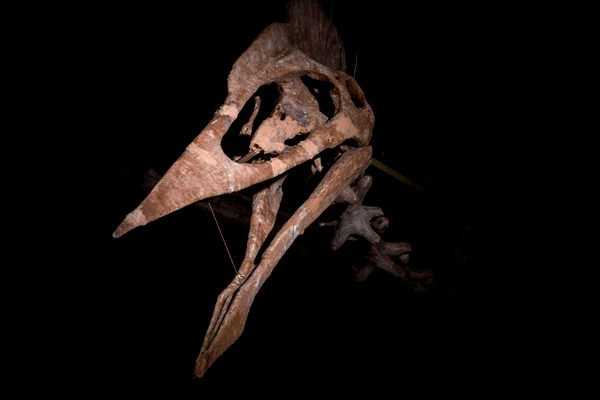Found: A Dinosaur With Features Borrowed From Swans, Penguins, and Crocs
It’s so unique that paleontologists initially doubted its authenticity.

The story of “Halszka,” a dinosaur fossil found in Ukhaa Tolgod, also known as Mongolia’s “dinosaur graveyard,” sounds like a steppe epic. After being unearthed, it was sold on the black market—Ukhaa Tolgod is notorious for its flourishing trade in illicit fossils—and was held in private collections around the world for years until 2015, when it was donated to the European Synchrotron Radiation Facility (ESRF). Since then, it has gone through extensive examination by paleontologists—maybe more experiments than any other fossil has seen. All this work revealed that it is the fossil of a new kind of duck-like dinosaur previously unknown to science.
Some of its features, including the sickle-shaped claws on its feet, are like those of velociraptors, but other traits are unique among known theropods—the suborder of dinosaurs that includes raptors and tyrannosaurus—that roamed the planet between 252 to 66 million years ago.
“The first time I examined the specimen, I even questioned whether it was a genuine fossil,” said Andrea Cau, a researcher at the University of Bologna and one of the ESRF paleontologists that identified the new creature, in a press release. The “Frankenstein-like” features made it hard for Cau and his team to place it in traditional dinosaur classifications. For a while the team even wondered if it was an amalgam of remains from different animals. But a 3-D reconstruction, by synchrotron X-ray microtomography, which can visualize internal details without damaging the fossil, proved the fossil’s authenticity—and its uniqueness.
The results, recently published in the journal Nature, revealed an amphibious creature that could walk on two legs like a duck, but also had flipper-like forelimbs, like those of penguin’s. It also had a long, swan-like neck and snout reminiscent of a crocodile’s.
The new specimen owes its scientific name, Halszkaraptor escuilliei, to late Polish paleontologist and Mongolian dinosaur expert Halszka Osmólska. “The peculiar morphology of Halszkaraptor fits best with that of an amphibious predator that was adapted to a combined terrestrial and aquatic ecology,” Caus added. “Thanks to synchrotron tomography, we now demonstrate that raptorial dinosaurs not only ran and flew, but also swam!”
















Follow us on Twitter to get the latest on the world's hidden wonders.
Like us on Facebook to get the latest on the world's hidden wonders.
Follow us on Twitter Like us on Facebook